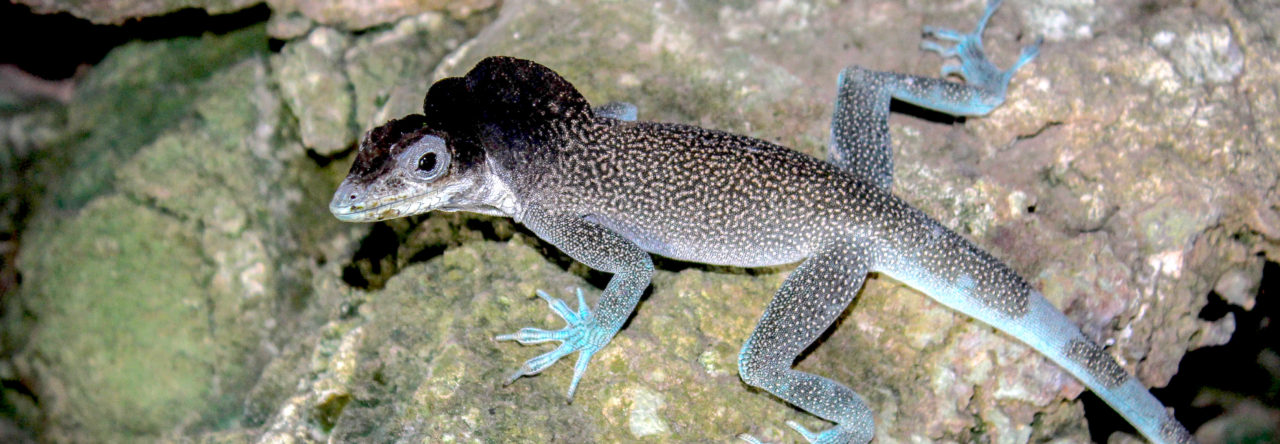
Bat eating frog. from http://www.impactlab.com/wp-content/uploads/2008/04/bat-eating-frog.jpg

Micronycteris microtis. Photo from http://www.chiroping.org/images/bats/microtis2.jpg
A question that comes up from time to time is whether bats are among the panoply of species that munch on anoles, particularly in the mainland neotropics. As we all know, some bats are renowned for catching and eating frogs, but will they also sup on our little friends? As far as I’m aware, there are no records in the literature of anolivory in bats, but perhaps a reader can correct me on this point. One can imagine two scenarios: first, bats active at dusk or dawn might nab anoles while still active. Alternatively, second, perhaps bats can use their sonar to locate sleeping anoles on leaves. This latter point has generally been considered unlikely because the acoustic clutter in a thick vegetational matrix has been thought to be make it difficult for bats to identify and locate non-moving objects in the vegetation.
A recent study shows that this is not so. Studying the insectivorous bat Micronycteris microtis from Panama, Geipel et al. have just shown that bats can use echolocation to find and capture non-moving prey, in this case dragonflies. More details are provided in the abstract pasted below. It would seem to follow, then, that bats may, indeed, prey on sleeping anoles, but in a critical oversight, the authors fail to comment on this pressing issue.
Abstract: “Gleaning insectivorous bats that forage by using echolocation within dense forest vegetation face the sensorial challenge of acoustic masking effects. Active perception of silent and motionless prey in acoustically cluttered environments by echolocation alone has thus been regarded impossible. The gleaning insectivorous bat Micronycteris microtis however, forages in dense understory vegetation and preys on insects, including dragonflies, which rest silent and motionless on vegetation. From behavioural experiments, we show that M. microtis uses echolocation as the sole sensorial modality for successful prey perception within a complex acoustic environment. All individuals performed a stereotypical three-dimensional hovering flight in front of prey items, while continuously emitting short, multiharmonic, broadband echolocation calls. We observed a high precision in target localization which suggests that M. microtis perceives a detailed acoustic image of the prey based on shape, surface structure and material. Our experiments provide, to our knowledge, the first evidence that a gleaning bat uses echolocation alone for successful detection, classification and precise localization of silent and motionless prey in acoustic clutter. Overall, we conclude that the three-dimensional hovering flight of M. microtisin combination with a frequent emission of short, high-frequency echolocation calls is the key for active prey perception in acoustically highly cluttered environments.”
- Evolution in Real Time on Lizard Island - March 23, 2025
- Spider Snags Adult Anolis osa - March 22, 2025
- An Homage to the Green Anoles of New Orleans - March 21, 2025



Daniel Scantlebury
It would be interesting to examine this on Tobago, where there are natural populations of Physalaemus and the bat that feeds on them, but also introduced populations of Anolis aeneus and A. extremus which are presumably naive to bat predators.